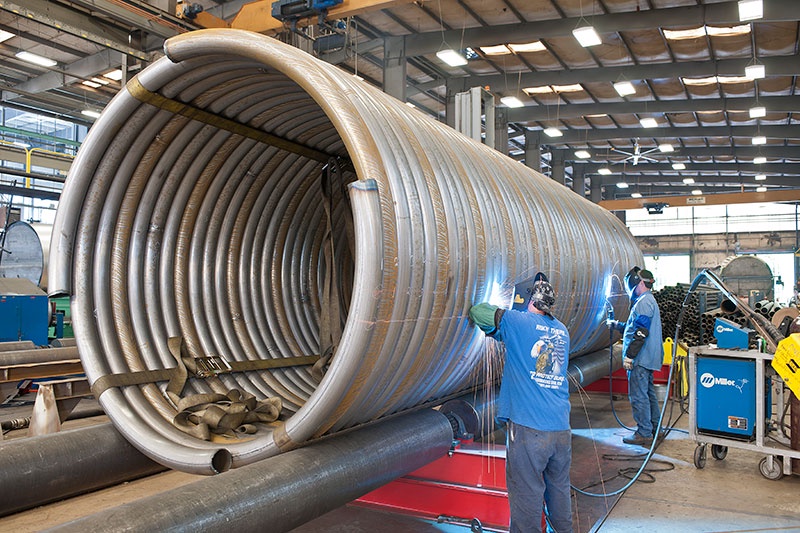Heat transfer is a crucial aspect of many industrial processes and applications. Maintaining proper temperatures and efficiently transferring heat allows systems to operate safely, effectively, and economically. Two key technologies that enable precise temperature control and heat transfer are thermal fluid heaters and heat exchangers. In this article, we will explore what these technologies are, how they work, and why they are vital components in so many industries.
What are Thermal Fluid Heaters?
Thermal fluid heaters, sometimes known as thermal oil heaters, are devices designed to heat up a thermal fluid or heat transfer oil. This heated fluid is then circulated through a closed-loop system to transfer heat energy to various processes and equipment.
Some of the most common thermal fluids used in these heaters include mineral oils, glycol mixtures, synthetic fluids like silicones, and even molten salts. The fluid is carefully selected based on the temperature range needed as well as compatibility with the system.
Thermal fluid heaters provide indirect heating as the fluid acts as an intermediary between the heater and the end process being heated. This allows for precise temperature control and efficient heat transfer even in applications that require high temperatures up to 600°C.
These heaters come in different configurations including electric immersion heaters, fired heaters, and electrode boilers. The choice depends on the required capacity, temperature, and pressure parameters.
Applications of Thermal Fluid Heaters
Thermal fluid heaters are used extensively in various industries including:
- Oil & Gas - Heating crude oil in refineries. Preheating combustion air.
- Chemical & Petrochemical - High temperature reactors. Rotary dryers and calciners.
- Food & Beverage - Baking ovens. Food sterilizers and evaporators.
- Plastics & Rubber - Extruders, molders, calenders.
- Pharmaceuticals - Autoclaves, reactors, dryers.
- Textiles - Fabric dryers, stenters, calenders.
- Pulp & Paper - Paper dryers, digesters, evaporators.
The ability to precisely control high temperatures makes these heaters indispensable in so many manufacturing and processing industries. They allow optimal process temperatures to be reached and maintained.
What are Heat Exchangers?
Heat exchangers are devices built for efficient heat transfer from one medium to another. They facilitate the exchange of thermal energy between two fluids without allowing them to mix or come into direct contact. This is important for controlling contamination and maintaining the integrity of the fluids.
There are several designs of heat exchangers but they all aim to maximize the surface area between the two fluids to improve heat transfer efficiency. Common types include shell and tube, plate and frame, air cooled, and double pipe heat exchangers.
Heat exchangers play a crucial role in many heating, cooling, and condensing systems. Some important applications include:
- Boilers, furnaces, and kilns – recovering waste heat improves efficiency
- Refrigeration and air conditioning – efficient cooling and condensing
- Chemical processing – precise temperature control for reactions
- Power generation – steam condensing in turbines
- Petroleum refining – preheating crude oil and reactor feedstock
Benefits of Thermal Fluid Heaters and Heat Exchangers
Combining thermal fluid heaters and heat exchangers allows for an extremely versatile and efficient means of heating, cooling, and heat transfer. Some of the key benefits this technology provides include:
- Precise temperature control – fluid temperatures can be finely regulated allowing processes to run optimally.
- High heat capacity – thermal fluids can handle temperatures exceeding 600°C far beyond steam.
- Cleaner heating – no combustion deposits or odors when using electric or fired heaters.
- Compact heating – higher heat capacity allows smaller equipment footprint.
- Efficient heat transfer – optimized heat exchange with minimal losses.
- Lower maintenance – heat exchangers have no moving parts. Thermal fluid systems are self-contained.
- Long service life – heaters and exchangers designed for decades of use with proper maintenance.
Conclusion
From small food processors to massive petrochemical plants, thermal fluid heaters and heat exchangers are found anywhere precise temperature control and efficient heat transfer are needed. These technologies allow processes to run safely at optimal temperatures leading to better product quality, higher yields, and lower operating costs. With capabilities exceeding steam, thermal fluid systems open up possibilities for improving all types of heating and cooling applications across every industry.


No comments yet